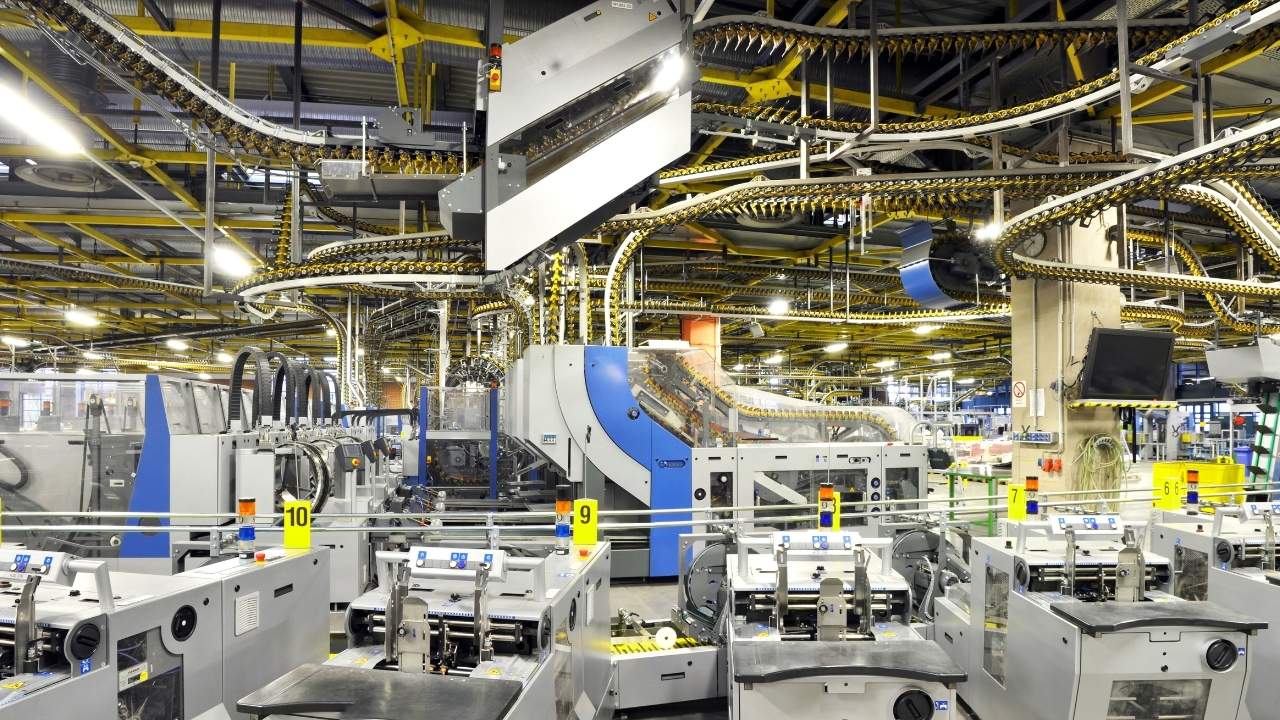Learn how Versa Cloud ERP helps manufacturers cut inventory costs through optimized operations, increased accuracy, and streamlined supply chain management.
Bringing Down Inventory Costs with ERP Systems
For manufacturers, inventory is one of the most significant expenditures. Raw materials, work-in-progress goods, and finished products all add up to a sizable investment. High inventory costs like ordering, carrying, storage and management eat into profits. When supply outstrips demand or inventory accuracy suffers, write-offs from obsolescence and shrinkage further hit the bottom line.
However, by leveraging Enterprise Resource Planning (ERP) software, producers can optimize inventory levels, increase turnover, improve visibility, cut operational costs, and make data-driven decisions. Integrated inventory control and supply chain management modules in ERP systems help businesses dramatically improve working capital, customer service, and competitiveness.
Understanding Inventory Costs
Before deploying an inventory optimization strategy, manufacturers must first understand three key cost drivers:
Ordering Costs – Expenses related to replenishing inventory, including procurement spend, transportation fees, and quality inspection.
Carrying Costs – Costs incurred from keeping and storing inventory over time, such as warehouse rent, labor, insurance, taxes, and interest on working capital.
Stockout Costs – Revenue losses and customer dissatisfaction due to inventory shortages. Occur when supply cannot meet demand.
The total cost perspective is key. While just-in-time approaches can reduce carrying costs, stockouts can be extremely expensive. An optimal total cost considers tradeoffs between ordering, carrying, and stockouts.
How ERP Software Reduces Inventory Costs?
Modern ERP systems help manufacturers balance these tradeoffs through:
Demand Forecasting – Statistical analysis and machine learning convert historical sales data into accurate demand projections. This enables efficient planning and procurement.
Optimal Inventory Levels – ERP applies data science to calculate re-order points and economic order quantities. Safety stock thresholds are set to achieve target fill rates.
Lead Time Reduction – By integrating suppliers and shortening manufacturing cycles, ERP systems help slash lead times. This lowers safety stock needs.
ABC Analysis – The inventory is classified into A, B, and C groups based on value. A higher focus on closely managing expensive A items cuts carrying costs.
JIT Capabilities – With real-time inventory transparency across the supply chain, ERP supports just-in-time methodologies.
Warehouse Management Integration – ERP delivers end-to-end inventory visibility and tracking across multiple warehouses and suppliers via barcode scanning, RFID, and IoT.
And Much More
Benefits of Inventory Optimization with ERP
Implementing an integrated ERP solution can transform inventory management, delivering quantifiable results including:
20% or higher increase in inventory turns
60% reduction in stockouts and order backlogs
30% or greater cut in excess and obsolete inventory
10-20% reduction in annual inventory carrying costs
$8-10 saved in logistics costs for every $1 invested in inventory accuracy
With optimized inventory levels and fewer shortages, manufacturers can improve customer service levels by over 5%. Combined with visibility across the supply chain, this allows businesses to respond better and faster to market changes.
Furthermore, the latest cloud ERP solutions leverage machine learning to continuously improve demand forecasting accuracy. They assimilate billions of external data points to detect trends and seasonality. This reduces the bullwhip effect through better coordination.
Key Focus Areas in an ERP for Inventory Costs Reduction
Below are five core areas where manufacturers should leverage ERP functionalities to lower inventory expenses:
1. Centralized Visibility and Control
Fragmented systems and poor inventory visibility are key barriers to optimization. ERP consolidates information across warehouses, suppliers, sales channels, and geographies onto a single platform. This provides real-time transparency for smarter decisions.
2. Inventory Tracking Automation
Manual inventory management is error-prone and inefficient. ERP enables tracking via barcodes, scanning devices, and IoT to automate put-away, cycle counting, picking, and shipping. Touchless updates reduce discrepancies.
3. Demand-Driven Procurement
Rather than gut feeling, ERP provides data-driven insights for planning material purchases and production runs. Procurement is aligned with actual requirements by considering upcoming orders, sales forecasts, pipeline opportunities, and market trends.
4. Improved Forecast Accuracy
ERP systems can reliably predict future inventory needs by running simulations using historical sales data and statistical demand analysis. Machine learning takes this even further. This minimizes excessive stock accumulation or shortages.
5. Dead Stock Identification
ERP facilitates identifying slow-moving and obsolete items using ABC classification and aging analysis. Special promotions, kitting, return to vendors or write-offs can prevent inventory buildup and free up working capital.
The Integral Link Between Inventory and Finance
For optimal results, inventory management cannot operate in isolation but must integrate tightly with financial planning and accounting. ERP enables this cross-functional coordination via:
Common Data Elements – Standardized item codes, cost types, and units of measure shared across inventory, supply chain, manufacturing, procurement, and finance modules avoid discrepancies.
Shared Transaction Hub – All inventory transactions including purchases, issues, receipts, adjustments, and shop floor material movements automatically trigger corresponding accounting entries for real-time reconciliation.
Costing Integration – Actual, weighted average, LIFO, FIFO, and standard costing methods are supported while ensuring costs flow accurately between the supply chain, inventory, production, and financial statements.
Unified Analytics – Reporting spans operational metrics like stock levels, supply/demand gaps, and turnover ratios alongside financial KPIs like cash flow, working capital, and inventory value for integrated insights. Leaders understand the financial implications of inventory decisions and vice versa.
These integrations enabled by ERP improve the quality and speed of decision-making regarding inventory costs related to procurement, production, and sales while maintaining accounting compliance and financial performance.
Optimizing Inventory Policies and Processes
In addition to cost reduction, ERP also facilitates process improvements related to inventory management:
1. Cycle Counting Optimization
ERP guides setting cycle count rules based on ABC classification, stock value, and business impact. Automating routine cycle counts and integrating resulting adjustments streamlines reconciliation.
2. Improved Loss Prevention
Tracking inventory ownership changes combined with serialized tracking where applicable improves asset accountability and loss prevention.
3. Quality Assurance Enablement
With inventory traceability from suppliers to customers, ERP systems help address product quality problems faster through containment, recalls, and corrective actions when required.
4. Regulatory Compliance
Lot control, serial number tracking, and expiration date management features in ERP help manufacturers adhere to regulatory compliance requirements.
5. Enabling Drop Shipments
ERP allows inventory kept at suppliers or distributors to be committed to customers directly, avoiding unnecessary stock builds. Together these best practices enabled by ERP ensure inventory accuracy, accountability, and quality while accelerating throughput velocity.
The Path to Continuous Improvement
While optimizing policies, organizations must also nurture a culture of continuous improvement by leveraging ERP to identify root causes. For example:
- ABC classification reveals the most profitable products based on margin and volume metrics. Focus on process improvements here first.
- Reports indicate locations, material groups, or suppliers with the highest cycle count variances. Probe and address why.
- Analytics provides insights into demand trends and seasonality. Adapt plans accordingly.
- Drill down to the reasons behind urgent/unplanned orders. Design preventive solutions.
- Find the serial numbers or batches with the highest failure rates. Work backward to address quality issues.
In this way, ERP enables both a top-down policy drive as well as a bottoms-up fact-based improvement cycle. Together they offer a mechanism for ongoing inventory efficiency gains.
Extending ERP Value with Bolt-On Functionality
Standard ERP suites today come integrated with extensive capabilities to optimize inventory using technologies like:
- Barcode scanners, mobile devices, and IoT for touchless tracking
- Machine learning algorithms to boost forecast accuracy
- Advanced planning engines to simulate supply-demand scenarios
However, manufacturers can augment core ERP with complementary solutions for added benefits:
Warehouse Management Systems (WMS) – Extend warehouse automation using pick-to-light systems, robotic pickers, automated storage, and retrieval while ensuring full ERP integration.
Transportation Management Systems (TMS) – Reduce freight costs by optimizing load planning, routing, and shipping while tracking purchase order deliveries.
Point of Sale (POS) – Capture customer demand signals by integrating brick-and-mortar retail stores as well as e-commerce channels with backend ERP.
Overall Equipment Effectiveness (OEE) – Improve machine reliability to increase production plan attainment thereby reducing stockouts. Together these extensions of ERP deliver multidimensional inventory optimization spanning warehousing, logistics, and shop floor operations.
Bringing It All Together with Versa Cloud ERP
After reviewing how manufacturer inventory expenses add up across ordering, carrying, and stockout costs, it is clear that optimizing inventory is critical for boosting profits. Modern cloud ERP systems like Versa Cloud ERP provide robust functionalities to gain end-to-end visibility, accurately forecast demand, scientifically calculate optimal stock levels, seamlessly collaborate with suppliers, and automate tracking.
By leveraging these capabilities, producers can minimize total inventory costs by over 20% while improving turns by 25%. Carrying costs can be cut drastically through lower safety stock needs and reliable JIT replenishment. Deadstock and write-offs also reduce with better demand planning, freeing up working capital.
With Versa Cloud ERP, manufacturers get access to AI-powered predictive analytics for near-accurate demand forecasts. Its intuitive warehouse management and shop floor execution apps deliver touchless inventory tracking using barcodes and IoT. By integrating 3PLs and suppliers onto a common platform, Versa provides rapid scalability to manage multi-site ops.
On top of sizable cost reduction and higher margins, optimized inventories translate into over 5% higher customer service levels. By eliminating shortages with data-driven stocking aligned to demand swings, manufacturers can better satisfy clients.
Schedule a free customized demo of Versa Cloud ERP to experience these benefits firsthand today. Our experts will showcase how leading manufacturers leverage Versa’s inventory optimization, demand planning, and warehouse management capabilities to maximize profits.
Empower your business with the knowledge to navigate the realm of an Integrated ERP solution, specifically tailored to your business needs. Gain insights, streamline processes, and propel your financial management to new heights with this comprehensive guide
With Versa Cloud ERP’s Implementation guide learn how a business can ensure a successful ERP Solution Implementation. Navigate the complexities of implementation with confidence!
Effectively manage your financials, accounting, inventory, production, and warehouse management workflows with our award-winning ERP.
Let Versa Cloud Erp’s do the heavy lifting for you.
[widget id=”custom_html-40″]
[widget id=”custom_html-42″]
[widget id=”custom_html-30″]
Do Business on the Move!
Make your businesses hassle-free and cut the heavyweights sign up for the Versa Cloud ERP today!!
Join our Versa Community and be Future-ready with us.
[widget id=”custom_html-20″]






